An Introduction to Heraldry
Tags:
A poster set explaining graphic principles of heraldic communication.
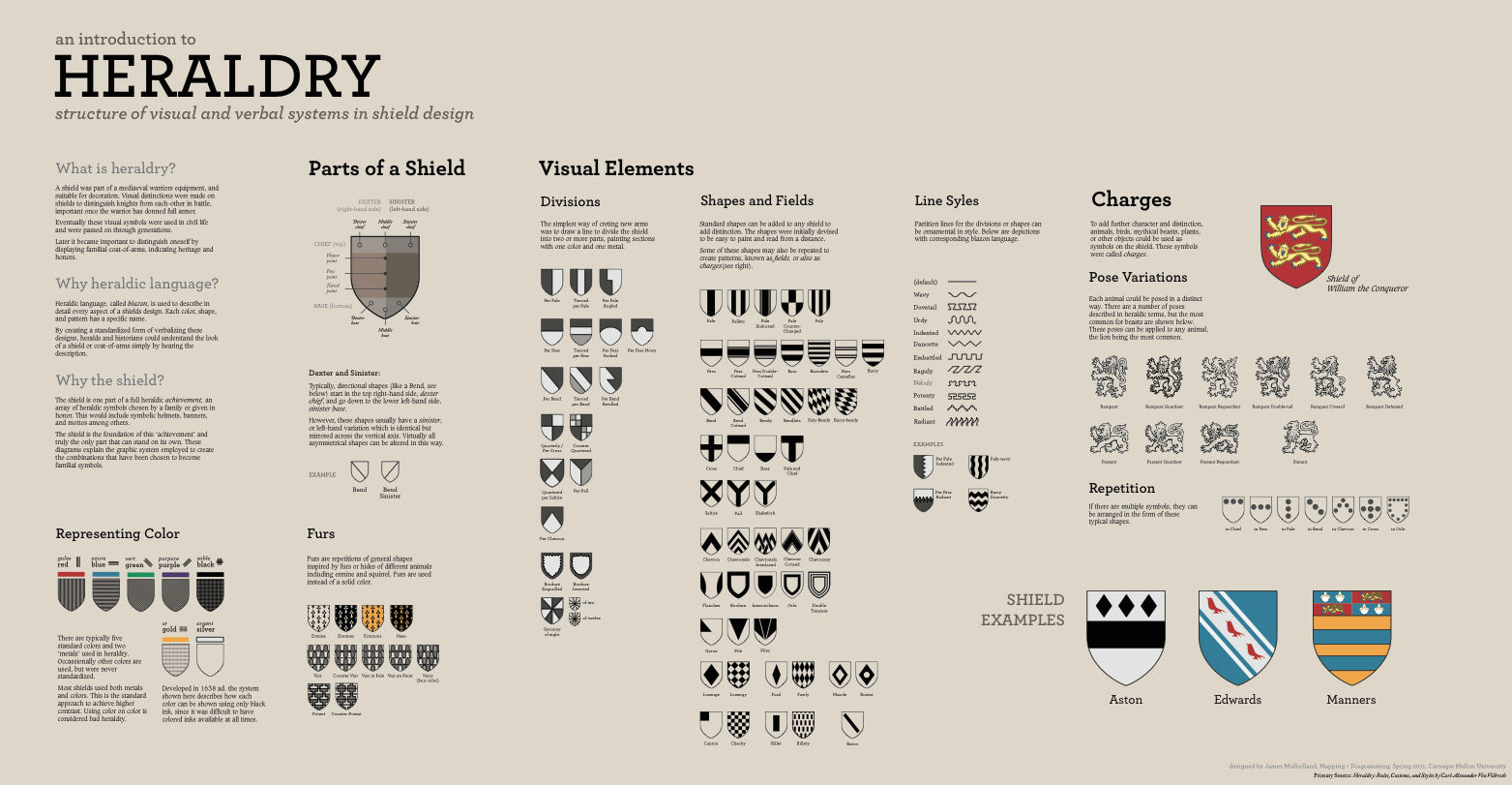
Heraldry is a graphic system developed in the middle ages to communicate identity of individuals or families. The practice of heraldry includes the composition of many graphic elements to represent the individuals. The most prominent and most important of these graphic elements is the shield.
Though changing slightly over time, the practice has been in use for hundreds of years mostly in Europe but similar practices have been found in other cultures as well. Heraldry contains a great number of rules, conventions and practices including a specific description of the typical patterns, shapes, and colors that have been standardized over time.
Heraldic language, blazon, is used primarily to describe the design of a shield using only words. By using letters instead of graphics, the composition could be easily documented when artists or art materials were not as readily available. The majority of perceived complexity of heraldic systems comes from the daunting terminology, but follows a relatively simple structure.
Heraldry’s strict set of rules are not merely a dense, restrictive rule set but a code system that was used to communicate visual information. Though the system relatively inaccessible to anyone who is not a scholar, the code is quite specific which allows for reliable accuracy in communication. The goal of this project was to make the system more transparent and accessible by a more mainstream audience.
Final Work
View full PDFs:
- Part 1 - “Structure of Visual and Verbal Systems
- Part 2 - “Image into Language”
- Part 3 - “Cadency (Heritage)” not available
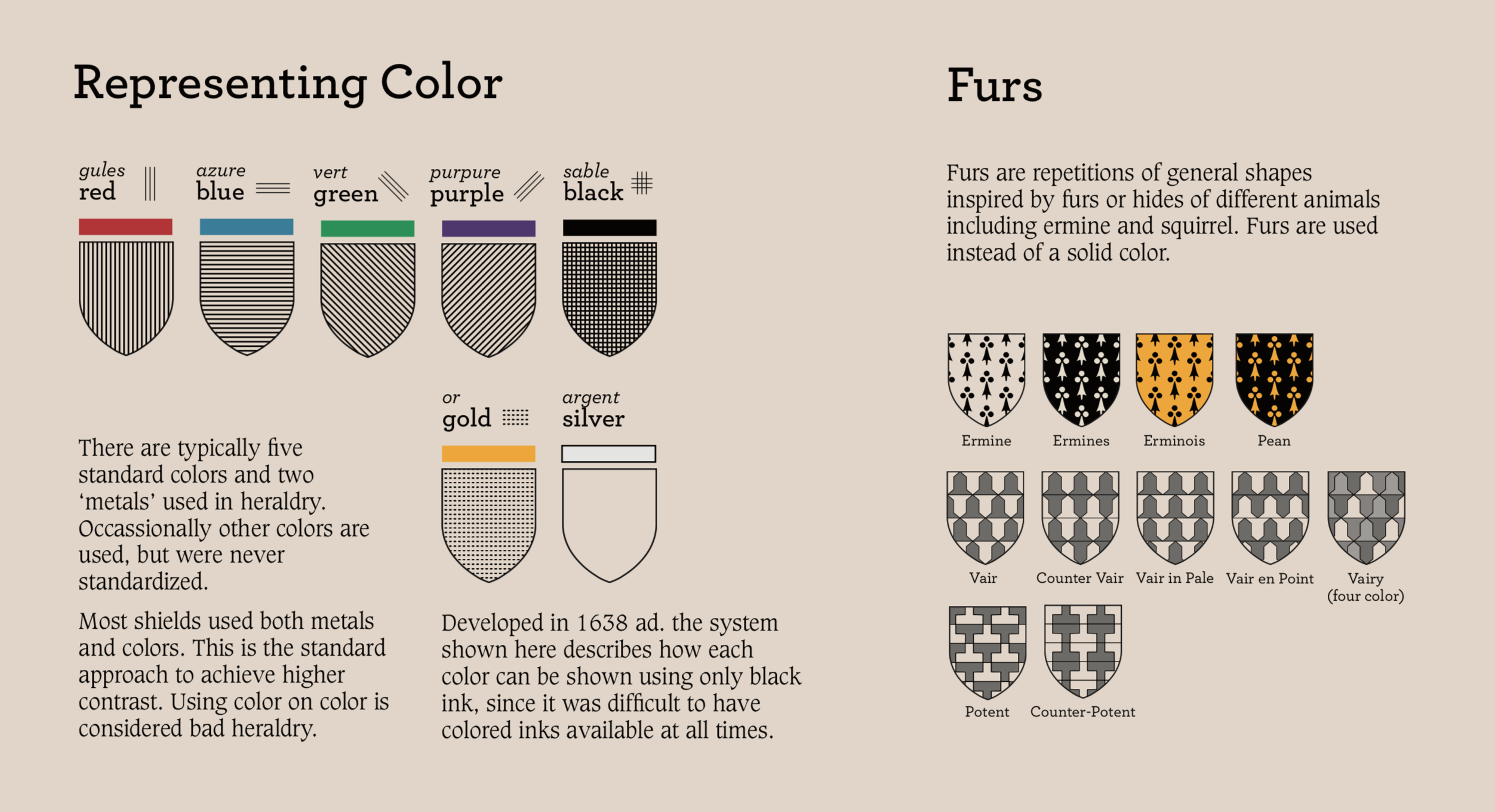
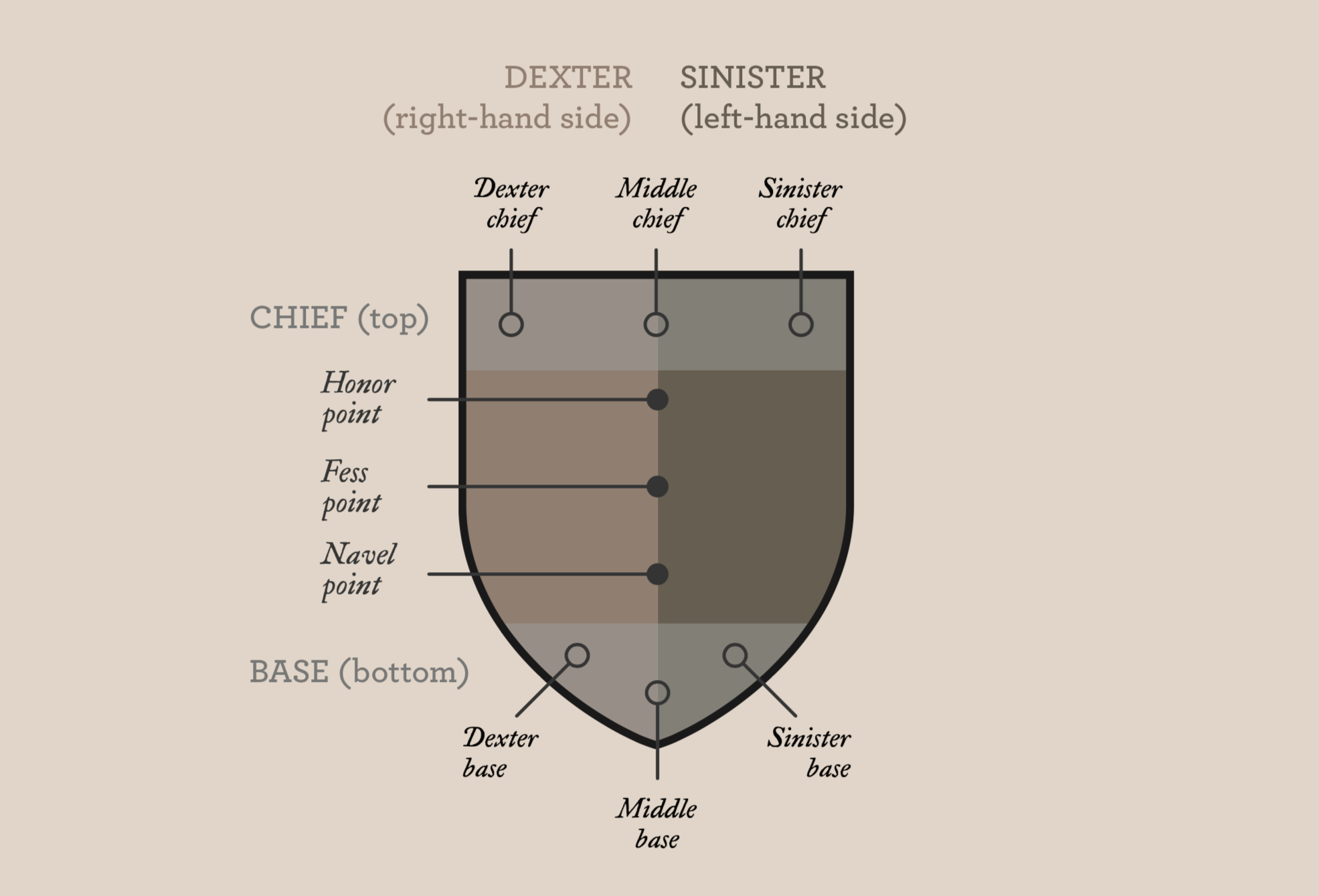
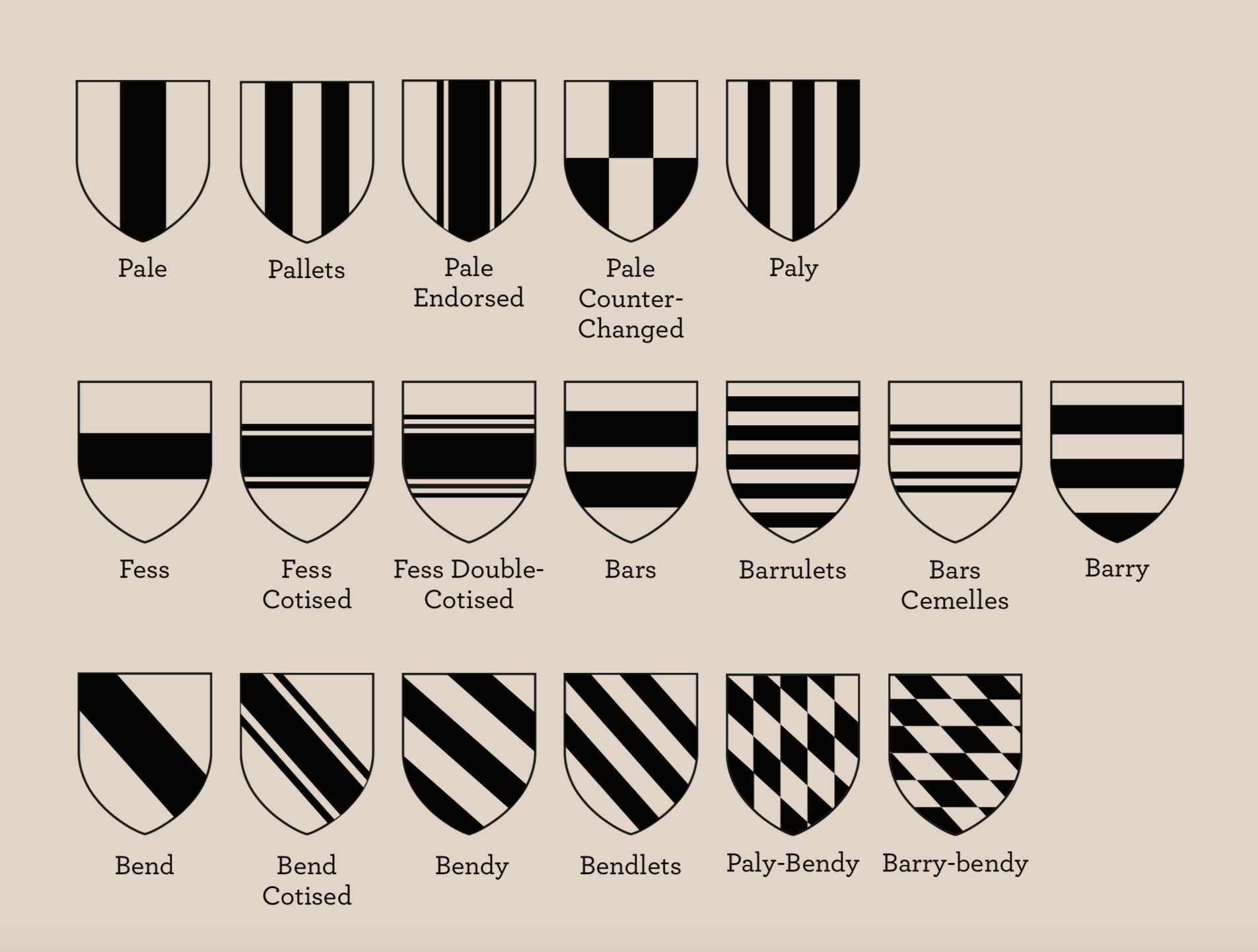
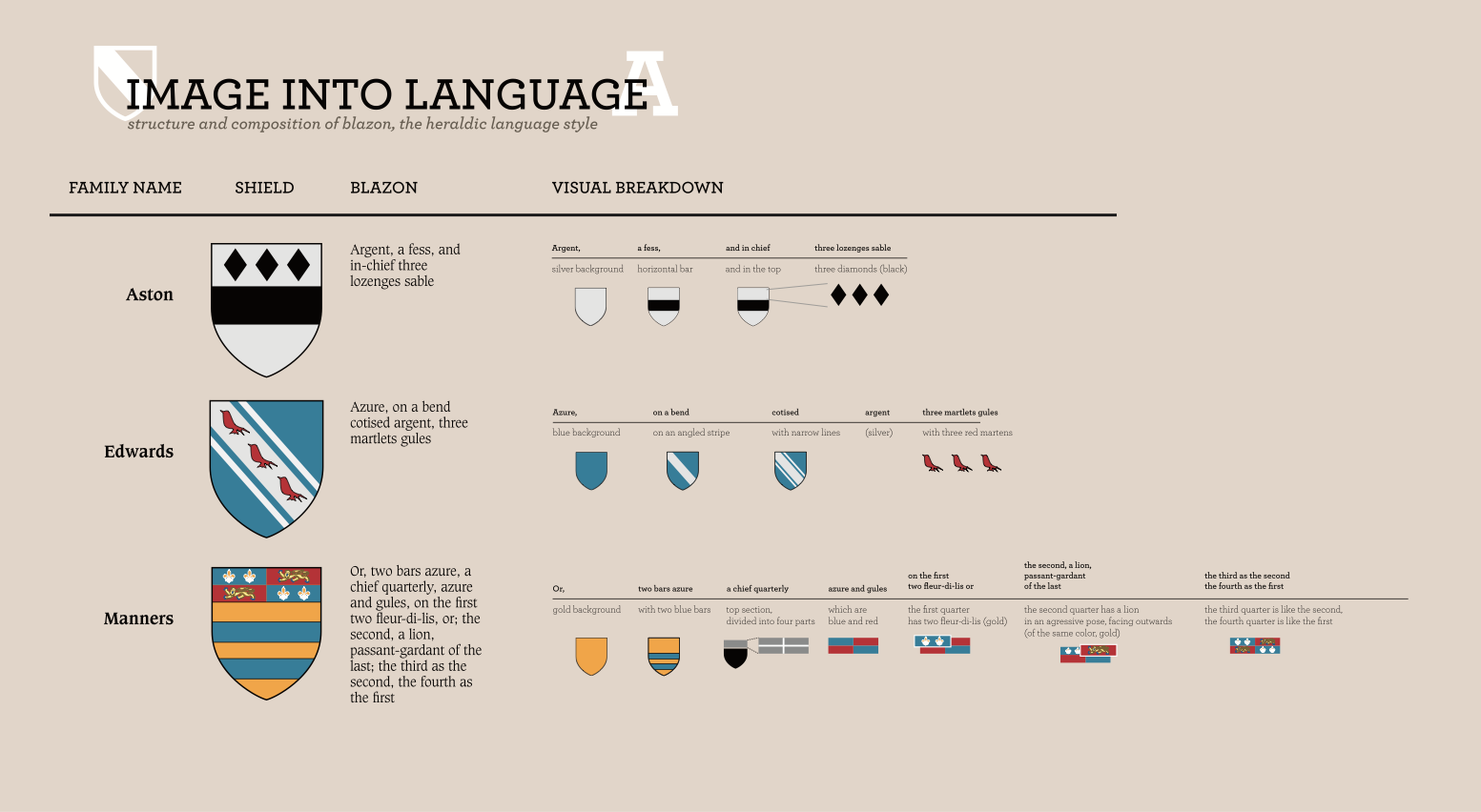


Process
I drew from multiple book sources to put the graphics together. However, all the vector graphics were produced using Illustrator. My primary difficulty was that two book sources (and 5 or so resources from Google Books) could not individually provide useful explanations or representations of individual customs or patterns. No single source gives a complete library of all the shapes and concepts; the resources are abridged due to publishing constraints (presumably the expense of printing color and/or images). However, since understanding heraldry requires seeing the written language AND corresponding graphics, I made a point to draw out the patterns in the graphics to clarify the systems and organization.
Primary Sources
Carl-Alexander Von Volbroth, Heraldry: Rules, Customs, and Styles
Guy Cadogan Rothery, Concise Encyclopedia of Heraldry
Coursework for Mapping & Diagramming
Masters of Human-Computer Interaction
Carnegie Mellon University, Spring 2011